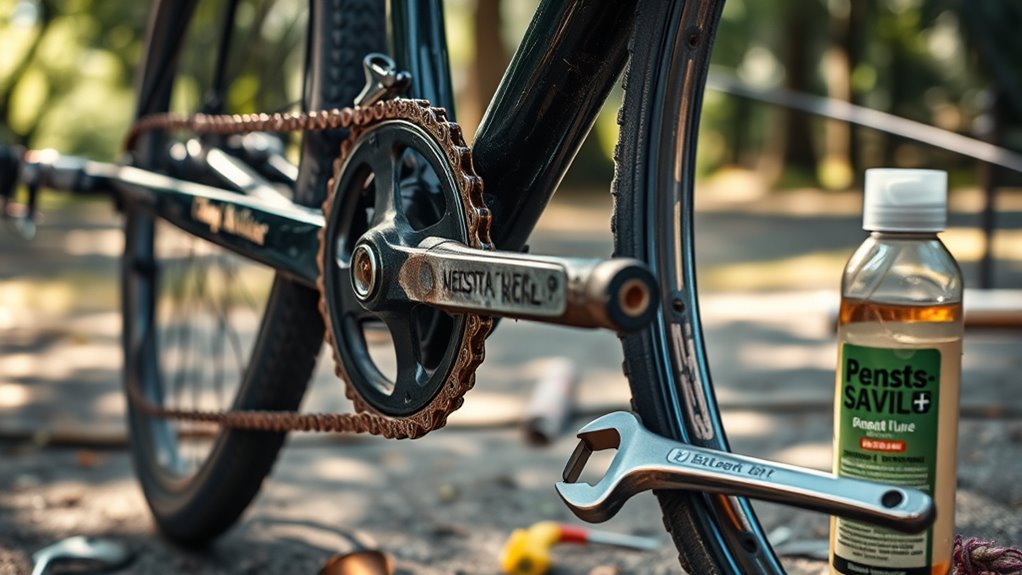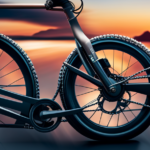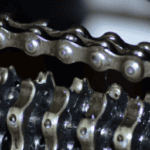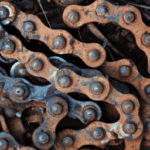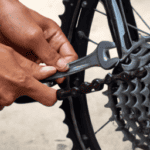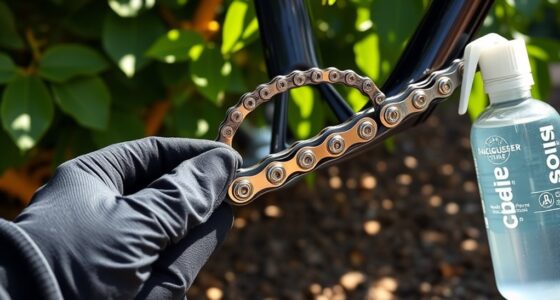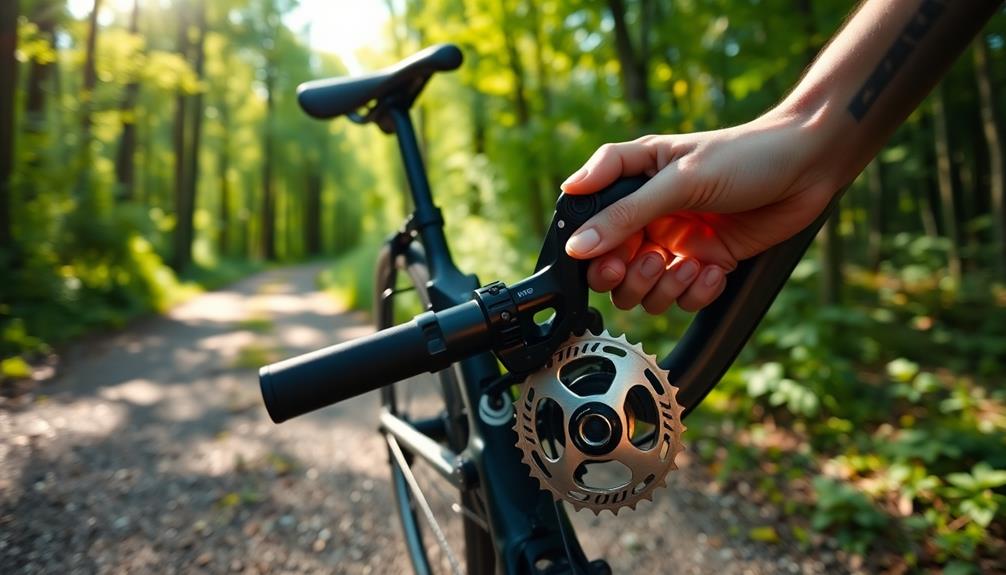Many beginners make common bike maintenance mistakes that can hurt performance and safety. You might skip regular maintenance checks, neglect your drivetrain cleaning, or use the wrong lubricant. Ignoring tire condition and pressure is also a frequent oversight. Finally, improperly tightening components can lead to costly repairs. By avoiding these pitfalls, you can enhance your riding experience and keep your bike in top shape. Find out more about how to maintain your bike effectively!
Key Takeaways
- Skipping regular maintenance checks can lead to costly repairs and unsafe rides due to decreased tire pressure and accumulated dirt.
- Neglecting drivetrain cleaning results in wear on components, compromising performance and longevity.
- Using the wrong lubricant, like WD-40, can damage chains; choose high-quality lubricants suitable for the riding conditions.
- Ignoring tire condition and pressure can create safety hazards; check for debris and maintain proper inflation regularly.
- Improperly tightening components, whether over or under-tightened, can lead to damage or detachment, so use a torque wrench for precision.
Skipping the Basics of Bike Maintenance

When you skip the basics of bike maintenance, you’re setting yourself up for costly repairs and unsafe rides.
Common bike maintenance mistakes often include neglecting regular maintenance checks. For instance, not monitoring tire pressure can lead to safety issues since tires lose about 1 pound of pressure daily, even when parked.
Additionally, dirt and grit can accumulate on bike parts, causing excessive wear if you don’t clean your bike regularly. Failing to inspect components like the chainset and cassette can hide dirt, affecting performance.
Remember, the right chain lubricant matters too; using the wrong one increases wear. Prioritizing these basics guarantees a smoother ride and saves you money in the long run. Also, maintaining color accuracy in your bike’s components can enhance overall performance and longevity.
Don’t underestimate the importance of a little upkeep!
Neglecting the Drivetrain Cleaning
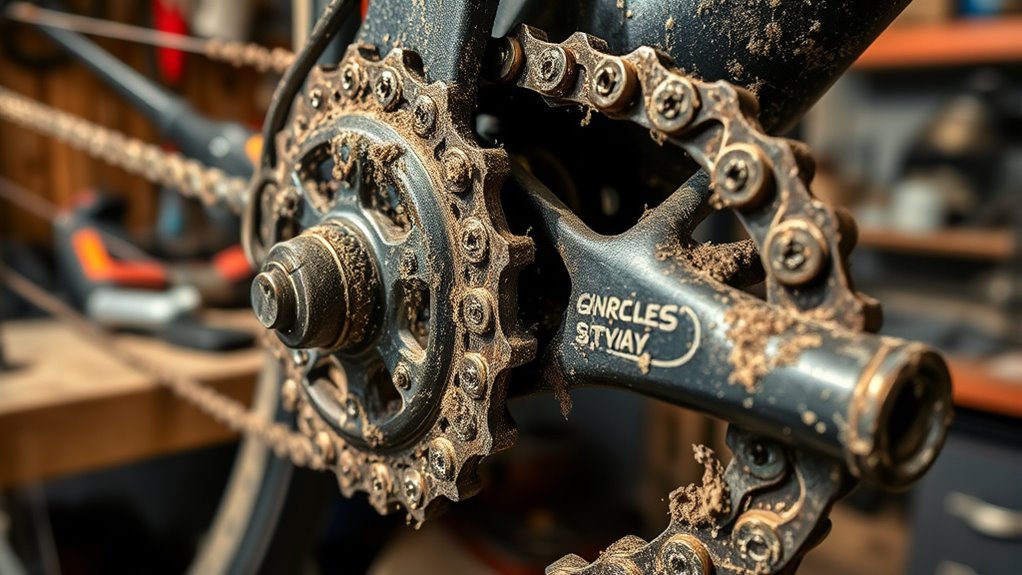
If you ignore your bike’s drivetrain cleaning, you’re risking both performance and longevity. The drivetrain, including the bike chain, is one of the most expensive parts after the frame, so regular maintenance is essential.
Neglecting your bike’s drivetrain cleaning jeopardizes performance and longevity, making regular maintenance crucial for expensive components.
Dirt and grime can accumulate, especially on the chainset, cassette, and pulley wheels, leading to wear and tear. Use a toothbrush and degreaser to thoroughly clean these areas instead of relying solely on bike wash. A clip-on chain bath or scrubber prevents overspray and guarantees an effective clean.
After cleaning, lubricate the drivetrain before applying any wax, but be cautious—applying too much can attract dirt and damage components. Regular maintenance of your drivetrain can significantly improve suction power and overall efficiency, enhancing your ride experience.
Prioritizing this maintenance not only extends your bike’s lifespan but also enhances its overall performance.
Using the Wrong Lubricant
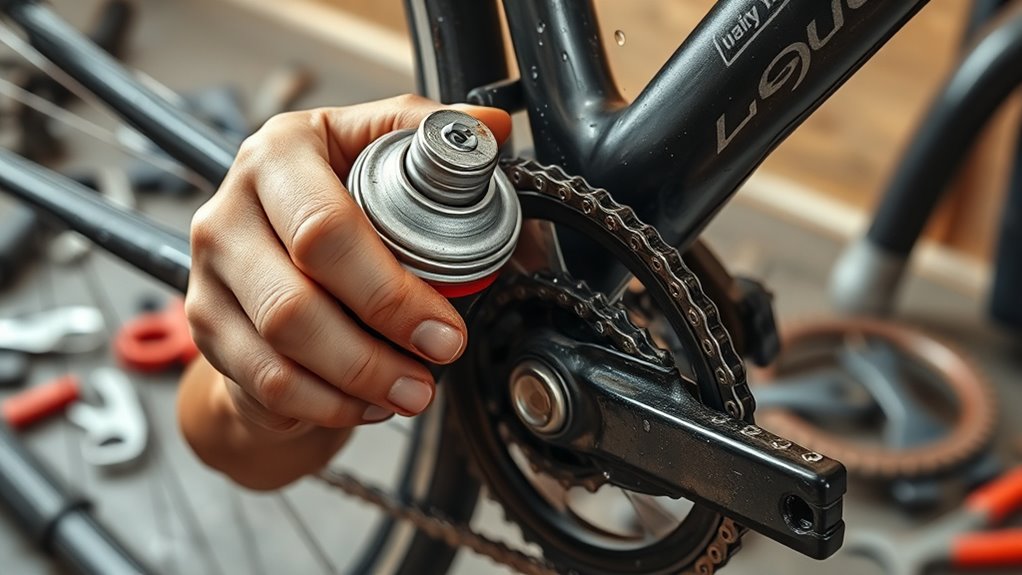
After ensuring your drivetrain is clean, the next step is selecting the right lubricant. Using the wrong lubricant is a common mistake many beginners make. Products like WD-40 aren’t designed for bike chains and can lead to wear. Make sure to choose a good quality lubricant suited for your riding conditions. Remember, over-lubricating can attract dirt, so apply just enough and wipe off any excess. Proper application enhances drivetrain efficiency and prolongs component life. Additionally, understanding your investment goals can help you make informed decisions about your bike maintenance budget.
| Lubricant Type | Best For | Common Use Mistakes |
|---|---|---|
| Wax | Clean conditions | Avoid in wet weather |
| Wet Lube | Rainy rides | Over-application |
| Dry Lube | Dry, dusty rides | Not enough for wet rides |
| All-Weather | Varied conditions | Ignoring application method |
Ignoring Tyre Condition and Pressure
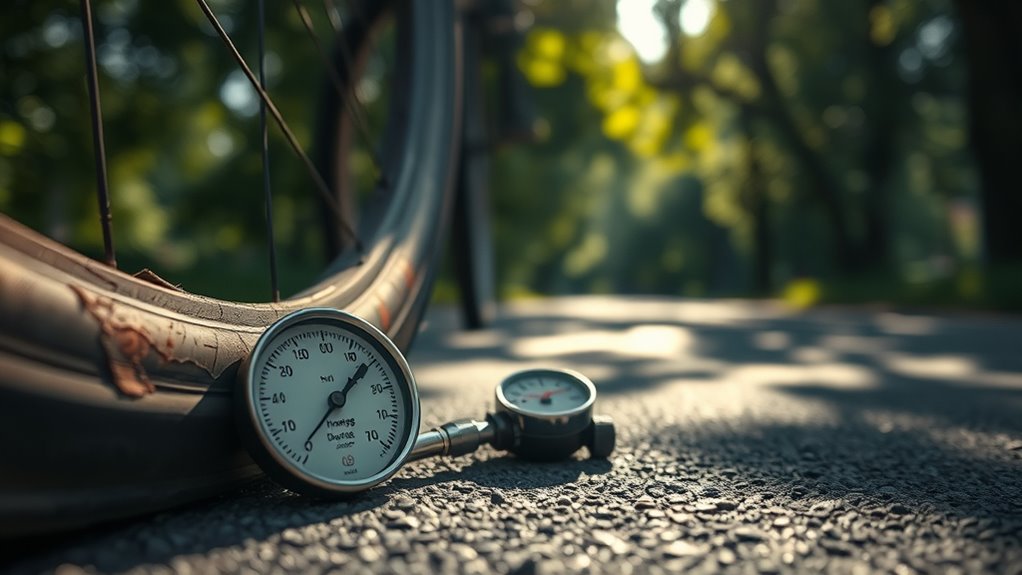
Neglecting tire condition and pressure is a critical mistake that can compromise your safety and bike performance.
Regularly checking your tire pressure is essential since tires can lose about 1 pound of pressure daily, even when not in use.
Follow these routine maintenance tips:
- Check tire pressure regularly, ensuring it’s within the recommended range on the sidewall.
- Inspect tires for debris and damage, addressing any small holes promptly to avoid worsening issues.
- Clean tires to remove foreign objects that could lead to future problems.
- Remember that both under-inflated and over-inflated tires can create safety hazards, like handling difficulties or blown inner tubes.
Staying vigilant will enhance your ride safety and performance! Additionally, energy-efficient models can help reduce overall maintenance costs and improve your biking experience.
Improperly Tightening Components

One common mistake many cyclists make is improperly tightening components on their bikes. Over-tightening parts like the headset or seat post can strip threads or damage carbon components, leading to expensive repairs and safety risks.
Improperly tightening bike components can lead to costly repairs and safety hazards—ensure you do it right!
On the flip side, under-tightening screws can result in loose components that might detach while you’re riding, creating dangerous situations.
To avoid these issues, make sure to use a torque wrench to tighten bolts to manufacturer specifications. This simple tool helps prevent both over and under-tightening, ensuring your bike maintenance is effective and reliable. Additionally, regular inspections of bolt tightness can help maintain peak performance and safety.
Regularly inspect bolt tightness, especially after adjustments or repairs, to maintain peak performance and safety.
Frequently Asked Questions
What Regular Maintenance Should Be Done on a Bicycle?
To keep your bicycle in top shape, you should regularly clean and lubricate the drivetrain, perform the ABC Bike Check before each ride, and inspect your brake pads and rotors.
Always check your tire pressure, as it can drop daily, affecting your ride.
Don’t forget to schedule routine inspections of bearings and components to catch issues early.
This proactive approach guarantees smooth rides and saves you from costly repairs down the road.
What Is the Most Common Bike Repair?
Picture yourself cruising down the road, wind in your hair, when suddenly your bike starts skipping gears.
The most common bike repair you’ll encounter is fixing shifting issues. Often, it’s not the derailleur that’s the problem, but dirt on the cables or incorrect tension.
To keep your ride smooth, regularly clean your drivetrain and check your cables. You’ll save time and money while enjoying a hassle-free biking experience.
How to Balance a Bicycle for Beginners?
To balance a bicycle, you should keep your body centered over the frame, aligning your weight for stability.
Practice riding slowly in a straight line to build confidence and control. Remember to look ahead instead of down at your front wheel, which helps maintain a straight course.
Use gentle steering adjustments with the handlebars to correct your path, and regularly practice starts and stops to develop muscle memory for effective balance.
How to Do a Maintenance Check on a Bike?
Imagine your bike as a trusty steed; it needs care to gallop smoothly.
To perform a maintenance check, start with the ABC bike check. Inflate tires, squeeze brake levers, and inspect the chain. Use a multitool to tighten quick-release levers and check for dirt in the chainset and cassette.
Finally, always inspect before each ride to catch small issues before they become big problems. Your bike will thank you for the TLC!
Conclusion
In the journey of biking, mastering maintenance is as essential as pedaling itself. By avoiding these common pitfalls, you’ll guarantee your ride glides like a whisper on the wind. Embrace the basics, keep that drivetrain sparkling, and choose the right lubricant to keep your bike humming. Don’t let neglected tires or loose components derail your adventures. With a little care, you’ll transform your bike into a trusty steed, ready to conquer any road ahead.
